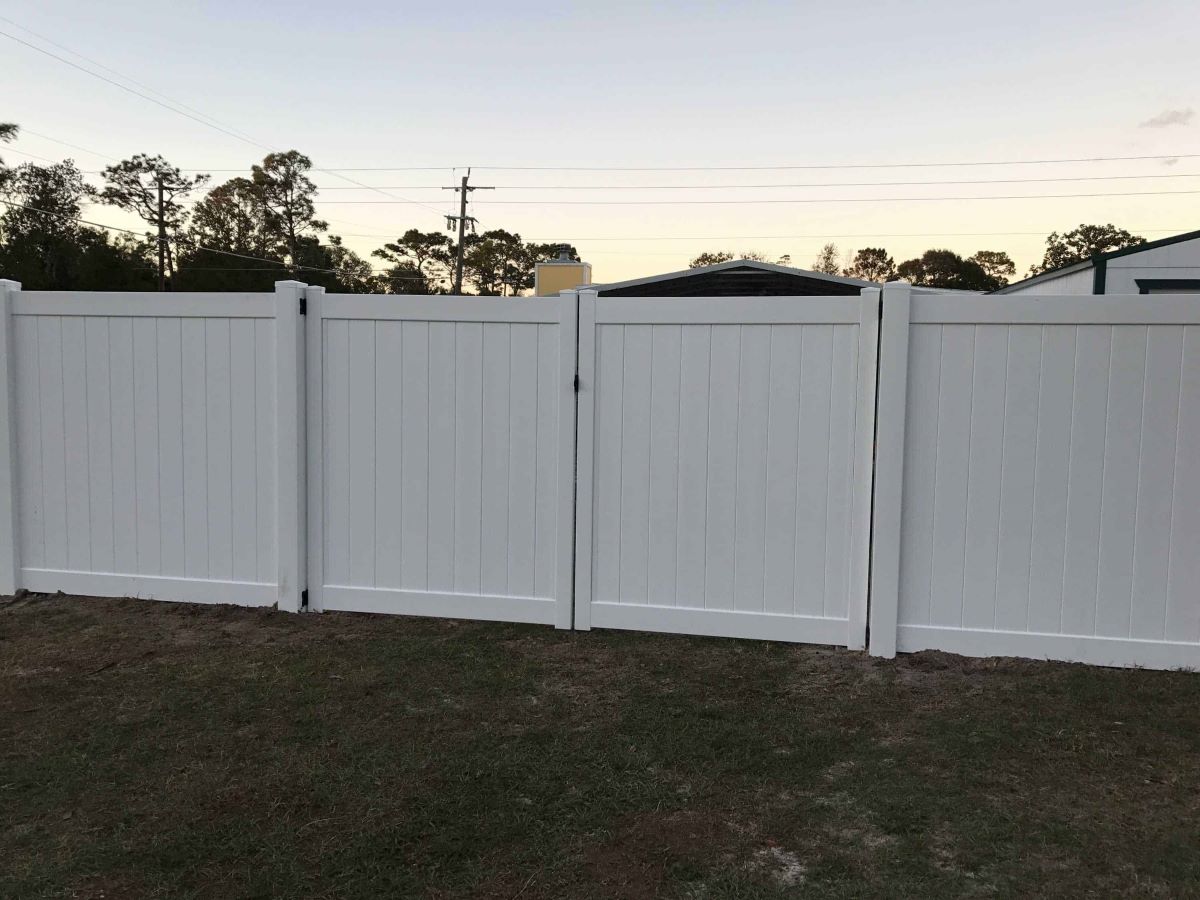

Articles
How To Brace A Vinyl Fence Against Wind
Modified: August 17, 2024
Learn how to brace your vinyl fence against strong winds with our informative articles. Protect your fence from potential damage and ensure its longevity.
(Many of the links in this article redirect to a specific reviewed product. Your purchase of these products through affiliate links helps to generate commission for Storables.com, at no extra cost. Learn more)
Introduction
When it comes to protecting your vinyl fence from the powerful forces of wind, it’s crucial to take the necessary precautions. Vinyl fences are a popular choice for their durability, low maintenance, and aesthetic appeal. However, their lightweight nature makes them susceptible to damage in high-wind conditions.
Understanding how wind loads affect your vinyl fence and implementing proper bracing techniques can help prolong its lifespan and keep it standing strong. In this article, we will delve into the various factors involved in windproofing your vinyl fence and provide you with practical tips to ensure its stability even in the face of strong winds.
Understanding Wind Loads
Wind loads refer to the amount of force exerted by the wind on a structure. This force can vary depending on factors such as wind speed, direction, and the surface area of the fence. It’s important to consider the wind loads that your vinyl fence may be subjected to in order to choose the appropriate bracing techniques.
Areas with high winds, such as coastal regions or open plains, require stronger bracing methods compared to areas with lower wind speeds.
Selecting the Right Fence Design
The design of your vinyl fence plays a crucial role in its ability to withstand wind loads. Certain fence designs, such as solid panels, tend to catch more wind and can be more prone to damage. Opting for a fence design with spacing between the slats allows wind to pass through more freely, reducing the overall wind load on the fence.
Furthermore, choosing a fence with a curved or angled design can help to deflect wind and minimize the force exerted on the structure. These design considerations can significantly impact the stability of your vinyl fence in windy conditions.
Choosing the Proper Materials
The materials used in the construction of your vinyl fence can also contribute to its resilience against wind. Invest in high-quality vinyl materials that are specifically designed to withstand extreme weather conditions. These materials are more likely to have reinforced components and superior durability, making them better equipped to handle strong winds.
It’s also important to choose posts and support structures made from sturdy materials such as steel or aluminum. Reinforced gate frames and hinges are essential for withstanding the additional stress placed on them during gusty winds.
Ensuring Proper Installation
The way your vinyl fence is installed is just as critical as the materials and design used. Improper installation can weaken the overall structure, making it more vulnerable to wind damage. Make sure the fence posts are securely set in concrete footings with sufficient depth to provide stability.
Consider consulting with a professional installer who has experience with wind-resistant fence installations. They can ensure that your fence is correctly assembled, avoiding any mistakes that may compromise its strength and stability.
Key Takeaways:
- Understanding wind loads and selecting the right fence design and materials are crucial for windproofing your vinyl fence. Proper installation and bracing techniques provide additional support, ensuring long-term stability and durability.
- Regular maintenance, strategic landscaping, and consulting with professionals are essential for further enhancing the wind resistance of your vinyl fence. By implementing these measures, you can protect your investment and enjoy a durable, visually pleasing fence for years to come.
Read more: What Is A Vinyl Fence
Understanding Wind Loads
When it comes to windproofing your vinyl fence, it is important to have a solid understanding of wind loads. Wind loads refer to the amount of force exerted by the wind on a structure, which includes both the direct force and the suction force. These forces can vary depending on several factors, including wind speed, direction, and the surface area of the fence.
Wind loads are usually measured in pounds per square foot (psf) or pounds per square inch (psi). The wind speed in your area, measured in miles per hour (mph), is an important factor in determining the wind load. Higher wind speeds will result in higher wind loads, increasing the stress on the fence.
Additionally, the direction of the wind in relation to the fence can also impact the wind load. If the wind is directly hitting the fence head-on, it will create a greater force compared to when the wind is at an angle. Winds that change direction frequently can subject the fence to additional stress as well.
The surface area of the fence is another crucial aspect in calculating wind loads. The larger the surface area, the higher the wind load and the more force applied to the fence. This is why taller fences or fences with wider panels are more susceptible to wind damage.
Understanding the specific wind loads that your vinyl fence may face is essential in determining the proper bracing techniques and reinforcements needed to ensure its stability.
In areas prone to high winds, such as coastal regions or open plains, it is recommended to consult with a professional who can assess the wind loads specific to your location. They can provide expert guidance on bracing methods to utilize and help you design a fence that can withstand the wind forces common in your area.
By considering wind loads and taking appropriate measures to brace your vinyl fence, you can significantly reduce the risk of damage and extend the lifespan of your fence. Remember, prevention is key when it comes to protecting your investment and keeping your property secure against the forces of nature.
Selecting the Right Fence Design
Choosing the right design for your vinyl fence is crucial for its ability to withstand wind loads. Certain fence designs are more susceptible to wind damage, while others are better equipped to handle strong winds. Here are some factors to consider when selecting the right fence design:
1. Spacing between Slats:
Fence designs with spacing between the slats allow wind to pass through more freely. This reduces the overall wind load on the fence, decreasing the risk of damage. Open or semi-privacy fence designs often have gaps between the slats, allowing for better wind flow. Conversely, solid panel designs can catch more wind and put additional stress on the fence.
2. Curved or Angled Designs:
Opting for a fence design with curved or angled components can help deflect wind, minimizing the direct force exerted on the structure. Curved or angled panels can disrupt the flow of wind, reducing the overall wind load on the fence. This design consideration can significantly increase the stability of your vinyl fence in windy conditions.
3. Height and Length of Fence:
The height and length of your vinyl fence can play a role in its vulnerability to wind damage. Taller fences have a larger surface area and are more likely to catch wind, increasing the wind load. Consider choosing a shorter fence if you live in an area with high wind speeds. Additionally, longer fence sections can be more susceptible to wind pressure. Installing shorter panels or dividing longer sections with strategic bracing can help mitigate the risk of damage.
4. Gate Design:
Gates are particularly susceptible to wind forces due to their size and overall structure. Selecting a gate design that is reinforced and built to withstand high winds is essential. Look for gates with aluminum frames or additional support structures to ensure they can withstand the strain of gusty winds. Adding diagonal or horizontal bracing to the gate can also enhance its stability.
5. Professional Guidance:
If you’re unsure about which fence design is best for your specific location and wind conditions, it is advisable to consult with a professional fence installer. They have the expertise to assess your needs, consider the wind loads in your area, and recommend the most suitable design and materials for your vinyl fence.
By selecting the right fence design, you can minimize the impact of wind loads on your vinyl fence. This will help ensure its long-term stability and reduce the risk of damage caused by high winds. Remember to consider factors such as slat spacing, curved or angled designs, fence height and length, gate design, and seek professional guidance when needed. By taking these steps, you can enjoy a durable and wind-resistant vinyl fence.
Choosing the Proper Materials
When it comes to windproofing your vinyl fence, selecting the proper materials is essential. Investing in high-quality materials designed to withstand extreme weather conditions can significantly enhance the durability and longevity of your fence. Here are important considerations when choosing materials for your wind-resistant vinyl fence:
1. Reinforced Vinyl:
Opt for vinyl materials that are specifically designed to withstand strong winds. These materials are often reinforced with additional components, such as aluminum or steel inserts, to provide extra strength and stability. Reinforced vinyl fences are more resistant to bending, warping, and damage caused by high wind loads.
2. Sturdy Posts and Support Structures:
Ensure that the fence posts and support structures are made from sturdy materials, such as steel or aluminum. These materials offer superior strength and can better withstand the forces exerted by strong winds. Avoid using wooden posts, as they are more susceptible to rot and can weaken over time, compromising the overall stability of the fence.
3. Reinforced Gate Frames and Hinges:
Gates are vulnerable areas in a vinyl fence and require extra attention when it comes to wind resistance. Opt for gates with reinforced frames and hinges that can withstand the additional stress placed on them during gusty winds. Reinforced gate hardware, such as heavy-duty hinges and latches, can help ensure that the gate remains securely closed even in high wind conditions.
4. UV Stability:
Choose vinyl materials that are UV-stabilized to prevent fading, cracking, or degradation caused by prolonged sun exposure. UV stability is especially important in regions with strong sun exposure, as it helps maintain the integrity and longevity of the fence despite harsh weather conditions.
5. Professional Recommendations:
If you’re unsure about the best materials for your wind-resistant vinyl fence, consult with a professional fence installer or supplier. They have expertise in the industry and can provide recommendations based on your specific needs and location. Professional guidance ensures that you invest in the most suitable materials for a durable and long-lasting vinyl fence.
By choosing high-quality and reinforced vinyl materials for your fence, along with sturdy posts, reinforced gate hardware, and UV-stabilized components, you significantly improve the wind resistance of your vinyl fence. Investing in reliable materials will help your fence withstand strong winds, prolong its lifespan, and minimize the risk of damage during inclement weather conditions.
Ensuring Proper Installation
Proper installation is crucial for the stability and wind resistance of your vinyl fence. A well-installed fence will be able to withstand strong winds and minimize the risk of damage. Here are some important considerations to ensure a proper installation:
1. Secure Post Placement:
The posts are the backbone of the fence and need to be securely placed. Dig post holes with the recommended depth and diameter, and ensure they are level and plumb. Use concrete to set the posts, allowing it to fully harden before installing the rest of the fence. Properly secured posts provide the necessary stability to resist wind load and prevent the fence from being easily knocked over.
2. Reinforce with Braces:
In high-wind areas, reinforcing the fence with braces can significantly enhance its stability. Braces can be installed at intervals along the fence line, typically at corners and ends, to provide additional support. Commonly used brace configurations include diagonal bracing or X-bracing, which counteract the lateral forces exerted by the wind. Consult with a professional installer to determine the optimal bracing technique for your specific fence design and location.
3. Use High-Quality Fasteners:
Ensure that high-quality, corrosion-resistant fasteners are used during the installation process. Stainless steel or galvanized screws and nails are recommended to prevent rust and maintain the integrity of the fence. Properly fastening the components of the fence will ensure that they remain securely attached, even during strong winds.
4. Properly Install Gates:
Gates are areas of the fence that are prone to additional stress from wind forces. To ensure the proper installation of gates, use reinforced gate frames and hinges that can withstand the extra force exerted during gusty winds. Check that the gate is level and aligned with the fence, and install sturdy gate latches to keep it securely closed. It may be necessary to install additional bracing near the gate area to reinforce its stability.
5. Consult with Professionals:
If you’re unsure about the proper installation techniques for windproofing your vinyl fence, it’s wise to consult with a professional fence installer. They have the knowledge and expertise to ensure that your fence is properly installed and able to withstand strong winds. Professional assistance can help you avoid common mistakes and provide guidance on specific installation requirements for your location.
By ensuring a proper installation, you greatly increase the wind resistance of your vinyl fence. Secure post placement, reinforcing with braces, using high-quality fasteners, and properly installing gates will all contribute to a sturdy and stable fence that can withstand strong winds. Consulting with professionals will provide you with expert advice for a successful installation and long-lasting fence.
Read more: How To Paint Vinyl Fence
Bracing Techniques for Vinyl Fences
Implementing proper bracing techniques can significantly enhance the wind resistance and stability of your vinyl fence. Bracing provides additional support and reinforcement, helping the fence withstand the forces exerted by strong winds. Here are three commonly used bracing techniques for vinyl fences:
1. Corner Bracing:
Corner bracing is essential for maintaining the structural integrity of your vinyl fence. It involves installing diagonal braces on the corners of the fence, typically in an “X” or triangular configuration. These braces counteract the lateral forces exerted by the wind, preventing the fence from leaning or toppling over.
To install corner braces, carefully measure and cut two pieces of lumber or metal that stretch diagonally from the top of one corner post to the bottom of the adjacent post. Secure the braces to the posts using sturdy screws or bolts. Ensure that the braces are tightly attached and provide sufficient tension to support the fence under wind load.
2. Line Bracing:
Line bracing involves installing horizontal braces along the length of the fence, typically between corner posts. These braces provide additional support to prevent the fence from flexing or swaying during high winds. Line bracing is especially useful for longer fence sections that may be prone to bowing or bending under wind pressure.
To install line braces, measure and cut horizontal pieces of lumber or metal that span between the corner posts. The braces should be positioned at a height that allows them to provide support without interfering with the appearance of the fence. Secure the line braces to the posts using appropriate fasteners, ensuring a snug fit. Multiple line braces may be necessary depending on the length of the fence.
3. Gate Bracing:
Gates are vulnerable areas in a fence and require extra reinforcement to withstand wind load. Gate bracing involves installing additional vertical or diagonal braces on gate posts and frames to strengthen their structure and prevent sagging or misalignment during windy conditions.
Gate bracing techniques can vary depending on the specific gate design and materials used. It’s crucial to consult with a professional installer or refer to the manufacturer’s guidelines for the recommended gate bracing techniques. They can provide you with the most effective methods to reinforce and secure your gate against wind forces.
When installing braces, it’s important to use sturdy materials such as pressure-treated lumber or metal. Choose appropriate fasteners to ensure a secure attachment. Regularly inspect the braces for signs of wear or damage, and make any necessary adjustments or repairs to maintain the fence’s stability.
By implementing proper bracing techniques, you can significantly improve the wind resistance and overall durability of your vinyl fence. Corner bracing, line bracing, and gate bracing all provide additional support to counteract the forces exerted by the wind, minimizing the risk of damage or structural failure. Consult with a professional installer if you’re unsure about the best bracing techniques for your specific fence design and location.
Consider installing diagonal bracing on the corners and ends of the vinyl fence to provide extra support against strong winds. This can help prevent the fence from leaning or becoming damaged.
Corner Bracing
Corner bracing is a crucial technique for enhancing the stability and wind resistance of your vinyl fence. It involves the installation of diagonal braces on the corners of the fence to counteract the lateral forces exerted by the wind. Corner bracing helps prevent the fence from leaning or toppling over during strong winds.
To properly execute corner bracing, follow these steps:
Step 1: Measure and Cut Braces:
Start by measuring the distance from the top of one corner post to the bottom of the adjacent post. Using this measurement, cut two pieces of lumber or metal at a 45-degree angle to create the diagonal braces.
Step 2: Attach Braces to Corner Posts:
Securely attach the braces to the corner posts using sturdy screws or bolts. Make sure the connection is tight and provides sufficient tension to support the fence under wind load. The braces should be positioned diagonally from the top of one corner post to the bottom of the adjacent post.
Step 3: Ensure Proper Alignment:
Check the alignment of the corner braces to ensure that they are straight and properly positioned. The braces should provide equal support to both corner posts. Make any necessary adjustments to achieve proper alignment.
Step 4: Adjust Tension:
Once the braces are securely attached, check the tension by applying force or pushing against the fence. The braces should provide resistance against the pressure, indicating that they are effectively supporting the fence. If necessary, adjust the tension by tightening or loosening the braces.
Corner bracing strengthens the corners of the fence, which are often more susceptible to wind damage due to the increased strain on these areas. The diagonal configuration of the braces helps distribute the lateral forces evenly, providing stability and preventing the fence from leaning or collapsing.
For added durability, use pressure-treated lumber or metal for the braces to ensure longevity and resistance to weather elements. Regularly inspect the corner braces for signs of wear or damage, and make any necessary repairs or replacements to maintain the fence’s stability.
Consult with a professional fence installer or refer to the manufacturer’s guidelines for specific recommendations on corner bracing techniques. They can provide expert advice tailored to your fence design and the wind conditions in your area.
By implementing proper corner bracing techniques, you can significantly enhance the wind resistance and overall stability of your vinyl fence. The braces counteract the lateral forces exerted by the wind, ensuring that your fence remains standing strong even in the face of strong winds.
Line Bracing
Line bracing is an effective technique for reinforcing your vinyl fence and improving its wind resistance. It involves the installation of horizontal braces along the length of the fence, typically between corner posts. Line bracing provides additional support to prevent the fence from flexing or swaying during high winds, especially in longer fence sections.
To properly execute line bracing, follow these steps:
Step 1: Measure and Cut Braces:
Measure the distance between two adjacent corner posts along the length of the fence where you want to install the line braces. Cut pieces of lumber or metal to the appropriate length to serve as the horizontal braces.
Step 2: Position and Attach Braces:
Position the line braces horizontally between the corner posts at a height that provides optimal support without interfering with the appearance of the fence. Attach the braces securely using sturdy screws or bolts, ensuring a tight and stable connection between the braces and the posts. If necessary, additional support brackets can be used to reinforce the attachment points.
Step 3: Consider Additional Line Braces:
Depending on the length of the fence and the expected wind loads, you may need to install multiple line braces at regular intervals. The spacing between the line braces will provide added reinforcement and stability to the fence. Consult with a professional installer or refer to manufacturer guidelines for the appropriate spacing of line braces based on your specific fence design and local wind conditions.
Step 4: Test Stability and Make Adjustments:
Once the line braces are installed, test the stability of the fence by applying force or pushing against it. The line braces should provide resistance and prevent excessive flexing or swaying. If needed, make any necessary adjustments to ensure proper tension and alignment of the line braces.
Line bracing helps distribute the wind load evenly across the length of the fence. By reinforcing the fence structure with horizontal braces, it becomes more resistant to bending or bowing under high wind pressure. This technique is particularly beneficial in longer fence sections where the risk of flexing and movement is higher.
When choosing materials for line bracing, opt for sturdy options like pressure-treated lumber or metal. These materials provide durability and can withstand the outdoor elements. Regularly inspect the line braces for any signs of wear, damage, or loosening of connections, and make necessary repairs or replacements to maintain the stability of the fence.
Consult with a professional fence installer or refer to manufacturer guidelines for specific recommendations on line bracing techniques. They can provide expert advice based on your fence design and the prevailing wind conditions in your area.
By implementing proper line bracing techniques, you can significantly enhance the wind resistance and overall stability of your vinyl fence. The horizontal braces provide additional support, reducing the risk of damage caused by strong winds and keeping your fence standing strong for years to come.
Gate Bracing
Gate bracing is a crucial technique for reinforcing the structure of your vinyl fence gate, providing extra support and stability in high wind conditions. Gates are more susceptible to wind forces due to their larger size and the inherent stress placed on them during gusty conditions. By implementing gate bracing techniques, you can strengthen your gate and help it withstand the additional strain caused by strong winds.
To properly execute gate bracing, follow these steps:
Step 1: Assess Gate Design:
Start by assessing the specific design of your vinyl fence gate. Different gate designs may require different bracing methods. Consider the materials used, such as vinyl, metal, or wood, as well as the size and weight of the gate. Gate bracing techniques can vary depending on these factors.
Step 2: Reinforce Gate Posts:
Gate posts are vital for the stability of the gate. Reinforce the gate posts by adding additional support, such as vertical or diagonal braces. These braces can be made from sturdy materials like pressure-treated lumber or metal. The braces should extend from the gate posts to the ground or to a secure footing, providing added support to the gate structure.
Step 3: Additional Horizontal Braces:
In some cases, adding horizontal bracing can further strengthen the gate. These braces can be installed inside the gate frame, helping distribute the force of the wind and preventing the gate from sagging or warping. Horizontal bracing can be attached to the gate posts and the horizontal rails of the gate, providing added stability.
Step 4: Gate Hardware Reinforcement:
Gate hardware plays a critical role in the stability of the gate. Ensure that you use high-quality, sturdy hinges, latches, and support brackets that are specifically designed to withstand strong winds. Reinforced gate hardware can help prevent gate sagging and misalignment, maintaining the overall strength of the gate during high wind conditions.
Step 5: Regular Maintenance:
Regularly inspect the gate bracing and hardware for any signs of wear, damage, or loose connections. Make any necessary repairs or replacements to maintain the effectiveness of the gate bracing. Lubricate the gate hinges and moving parts to ensure smooth operation. Regular maintenance is essential for the long-term stability and functionality of the gate.
Gate bracing techniques may vary based on the specific gate design and materials used. If you are unsure about the best gate bracing method for your vinyl fence, consult with a professional installer or refer to the manufacturer’s guidelines for specific recommendations based on your circumstances.
By implementing proper gate bracing techniques, you can significantly increase the wind resistance and overall stability of your vinyl fence gate. The additional support provided by gate bracing helps prevent sagging, warping, or misalignment during strong winds, ensuring that your gate remains secure and functioning properly.
Read more: How To Disassemble Vinyl Fence
Additional Tips for Windproofing
Aside from the bracing techniques mentioned earlier, there are additional measures you can take to further enhance the windproofing of your vinyl fence. These tips will help minimize the risk of damage and ensure the long-term stability of your fence in windy conditions:
1. Regular Maintenance:
Perform regular maintenance on your vinyl fence to keep it in optimal condition. Inspect the fence for any signs of damage, such as cracks, loose components, or deteriorating sections. Repair or replace any damaged parts promptly to maintain the integrity of the fence. Regular cleaning and visual inspections will help you identify and address any potential weak points before they become more significant issues.
2. Trim Nearby Trees and Shrubs:
Trim or remove any overhanging branches or vegetation near your fence. During high winds, these branches can rub against the fence, causing damage and increasing the wind load on the fence. By keeping nearby trees and shrubs well-maintained and away from the fence, you reduce the risk of potential damage caused by contact with vegetation.
3. Reinforce or Replace Weak Sections:
If certain sections of your vinyl fence are weaker or more susceptible to wind damage, consider reinforcing those areas. This may involve adding additional support or bracing to specific sections of the fence. Alternatively, if certain portions of the fence are consistently problematic, it may be necessary to replace those sections with stronger materials or design elements.
4. Reduce Wind Flow:
Consider installing windbreaks or wind barriers near your fence to redirect wind flow. This can be done by using other structures, such as hedges or walls, to create a buffer zone between the wind and the fence. These windbreaks can help reduce the direct force exerted on the fence and mitigate wind damage.
5. Strategic Landscaping:
Strategically planting shrubs or bushes near your fence can help create a windbreak and reduce the overall wind loads on the fence. Choose shrubs that are known for their wind resistance and resilience. By positioning them strategically, you can create a natural barrier that lessens the impact of strong winds on your vinyl fence.
6. Monitor Weather Conditions:
Stay informed about weather conditions in your area, especially during periods of high winds or storms. Being aware of potential severe weather can help you take proactive measures to secure your fence, such as reinforcing bracing or removing any loose objects that could potentially damage the fence in high winds.
7. Consult with Professionals:
If you have concerns about the wind resistance of your vinyl fence, don’t hesitate to consult with a professional fence installer or manufacturer. They can assess your specific situation, provide expert advice, and offer recommendations tailored to your fence design and local wind conditions.
By implementing these additional tips for windproofing your vinyl fence, you can further enhance its stability and minimize the risk of damage in high-wind conditions. Regular maintenance, strategic landscaping, and monitoring weather conditions will help ensure the long-term durability and wind resistance of your vinyl fence.
Conclusion
Windproofing your vinyl fence is essential to ensure its stability, durability, and longevity. By understanding wind loads, selecting the right fence design and materials, ensuring proper installation, and implementing bracing techniques, you can significantly enhance the wind resistance of your vinyl fence. These measures will help protect your investment and keep your property secure even in the face of strong winds.
Understanding wind loads is the first step in windproofing your fence. By considering factors such as wind speed, direction, and the surface area of the fence, you can determine the appropriate bracing techniques and reinforcements needed to withstand wind forces specific to your location.
Choosing the right fence design and materials is crucial. Opt for fence designs with spacing between slats for improved wind flow and consider curved or angled designs to deflect wind. Invest in high-quality vinyl materials that are reinforced and designed to withstand extreme weather conditions. Sturdy posts, reinforced gate frames, and proper installation techniques are also key factors in ensuring the wind resistance and stability of your vinyl fence.
Bracing techniques, such as corner bracing, line bracing, and gate bracing, provide additional support and reinforcement. Diagonal or triangular corner braces and horizontal line braces help counteract lateral forces exerted by the wind, while gate bracing strengthens the structure of the gate and prevents sagging or misalignment.
Additional tips for windproofing your vinyl fence include regular maintenance, trimming nearby vegetation, reinforcing weak sections, reducing wind flow with windbreaks or strategic landscaping, monitoring weather conditions, and consulting with professionals for guidance and support.
In conclusion, windproofing your vinyl fence is crucial for its stability and longevity. By implementing appropriate measures, such as understanding wind loads, selecting the right design and materials, ensuring proper installation, and using bracing techniques, you can protect your vinyl fence from wind damage and maintain its aesthetic appeal. By taking these steps, you can enjoy a durable, wind-resistant, and visually pleasing fence for years to come.
Frequently Asked Questions about How To Brace A Vinyl Fence Against Wind
Was this page helpful?
At Storables.com, we guarantee accurate and reliable information. Our content, validated by Expert Board Contributors, is crafted following stringent Editorial Policies. We're committed to providing you with well-researched, expert-backed insights for all your informational needs.
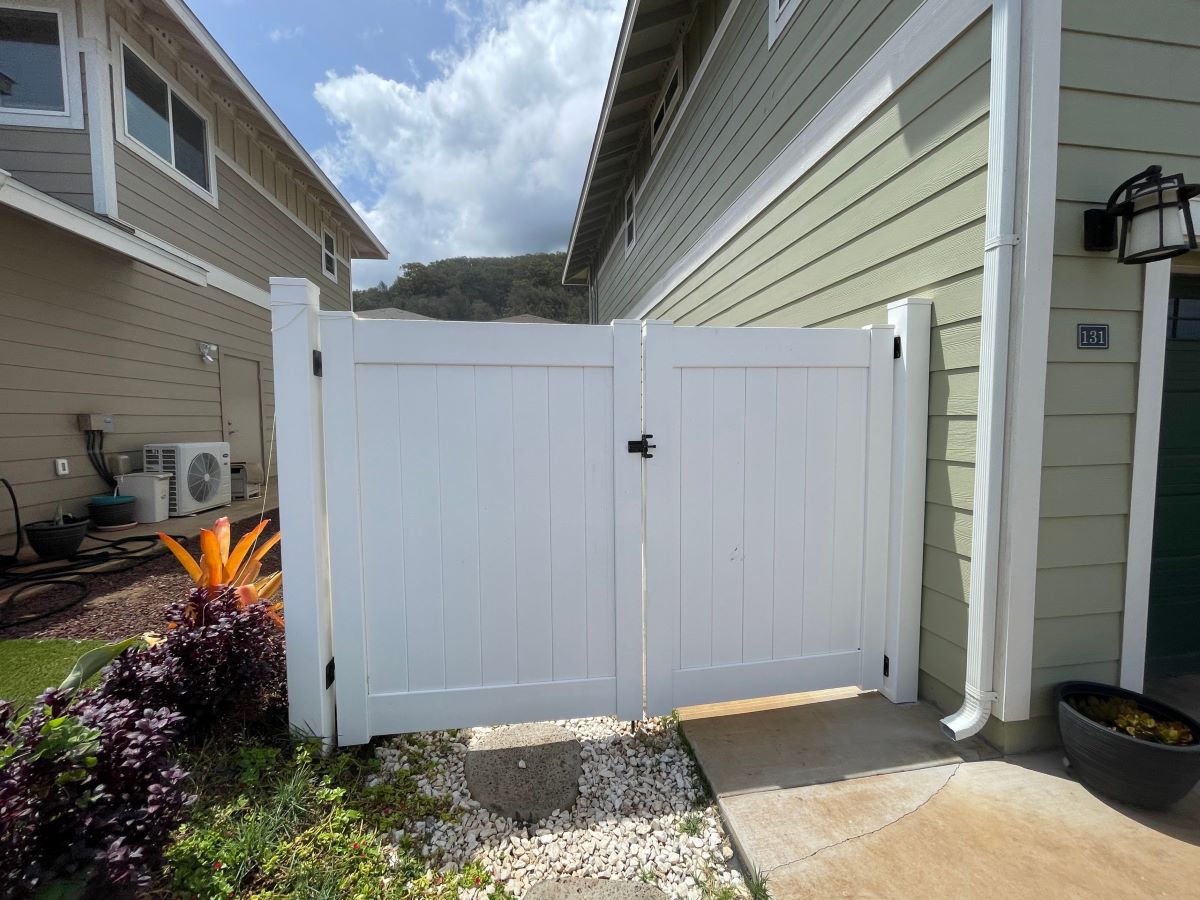
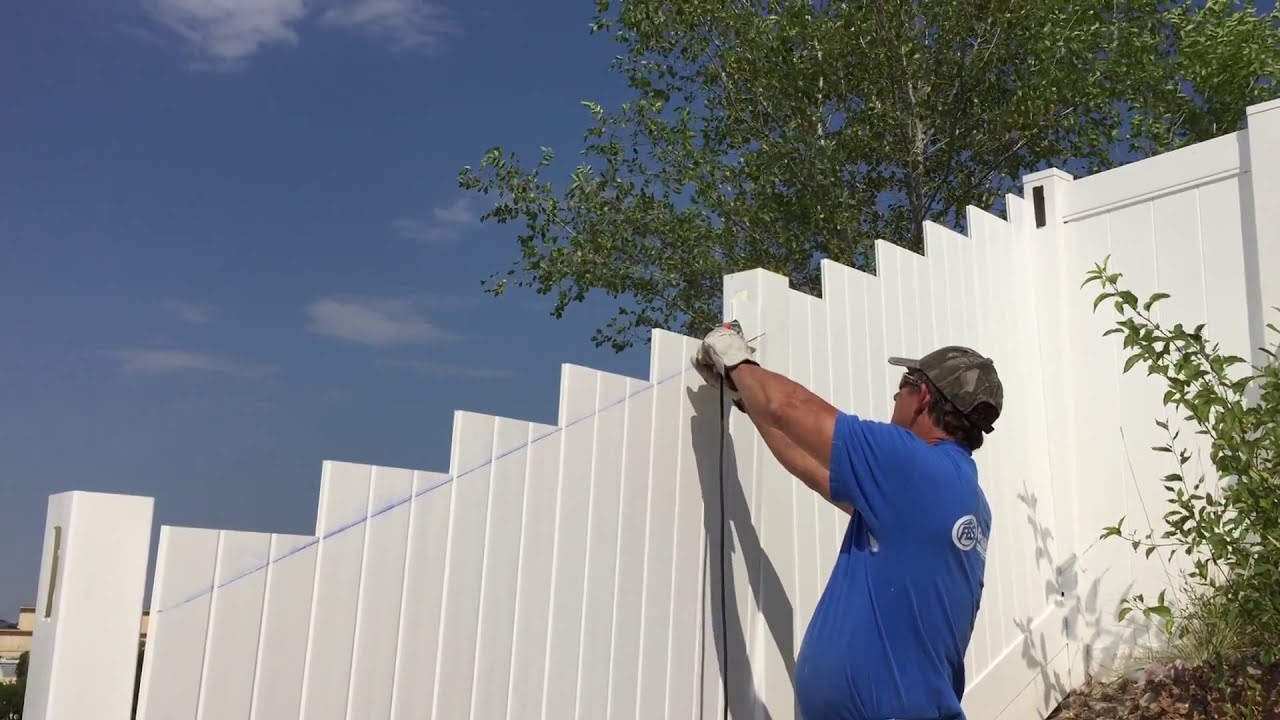
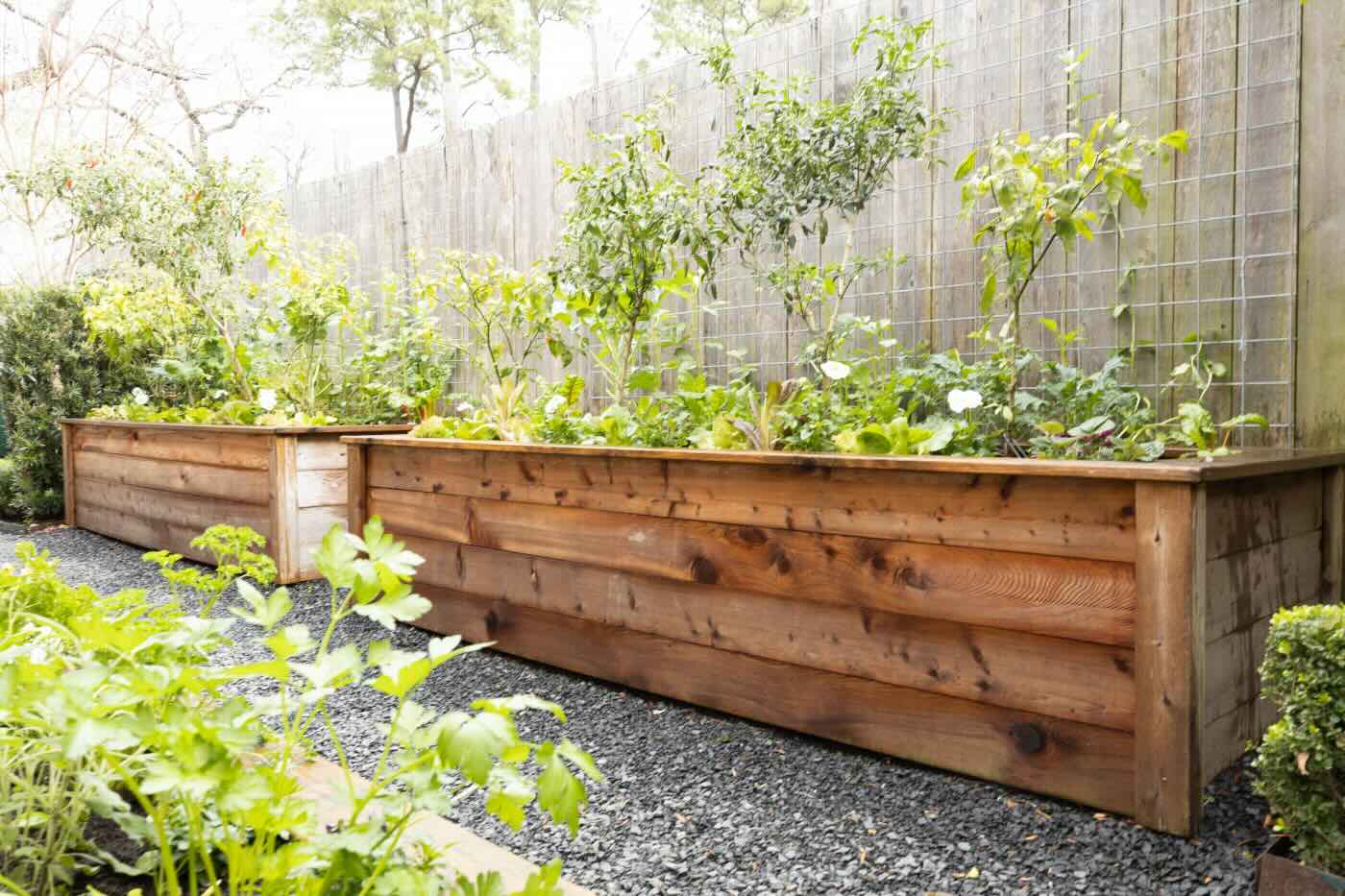
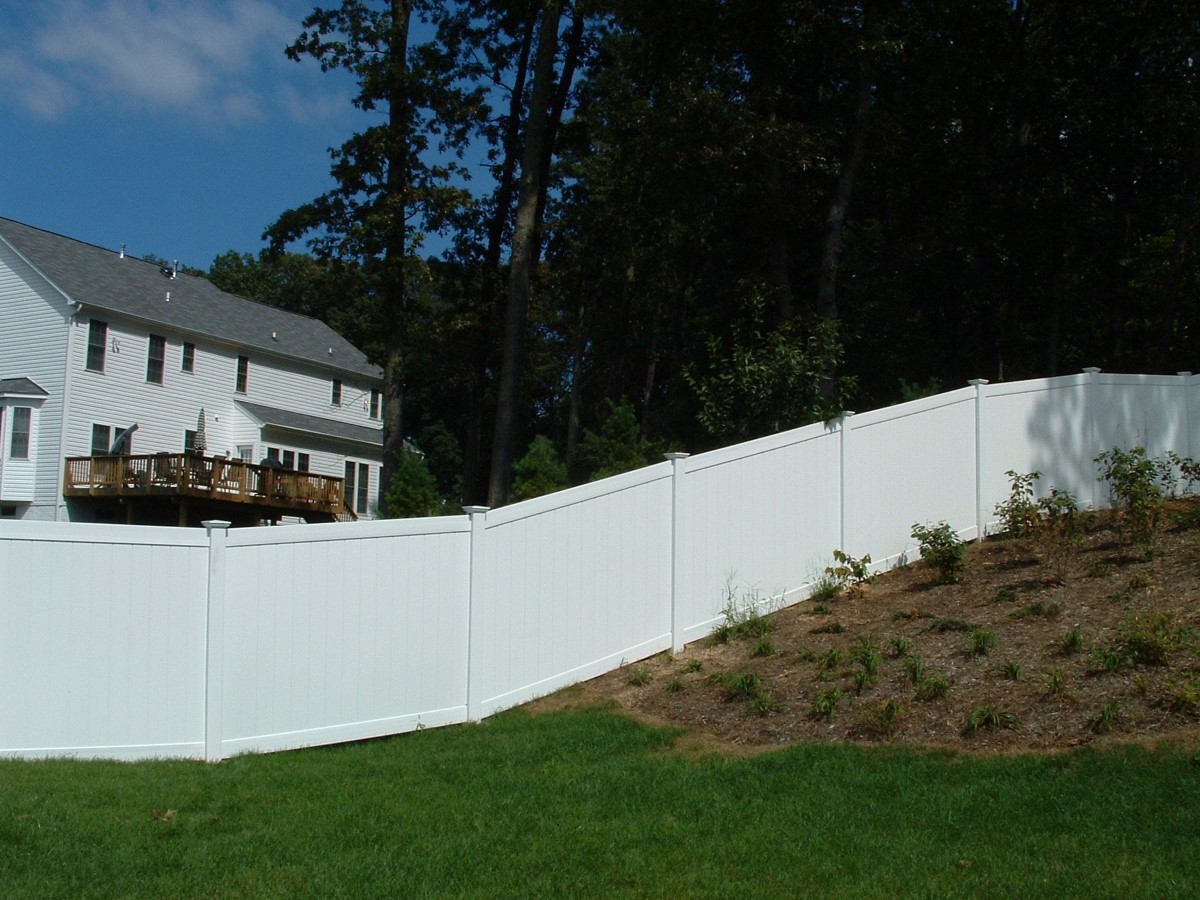
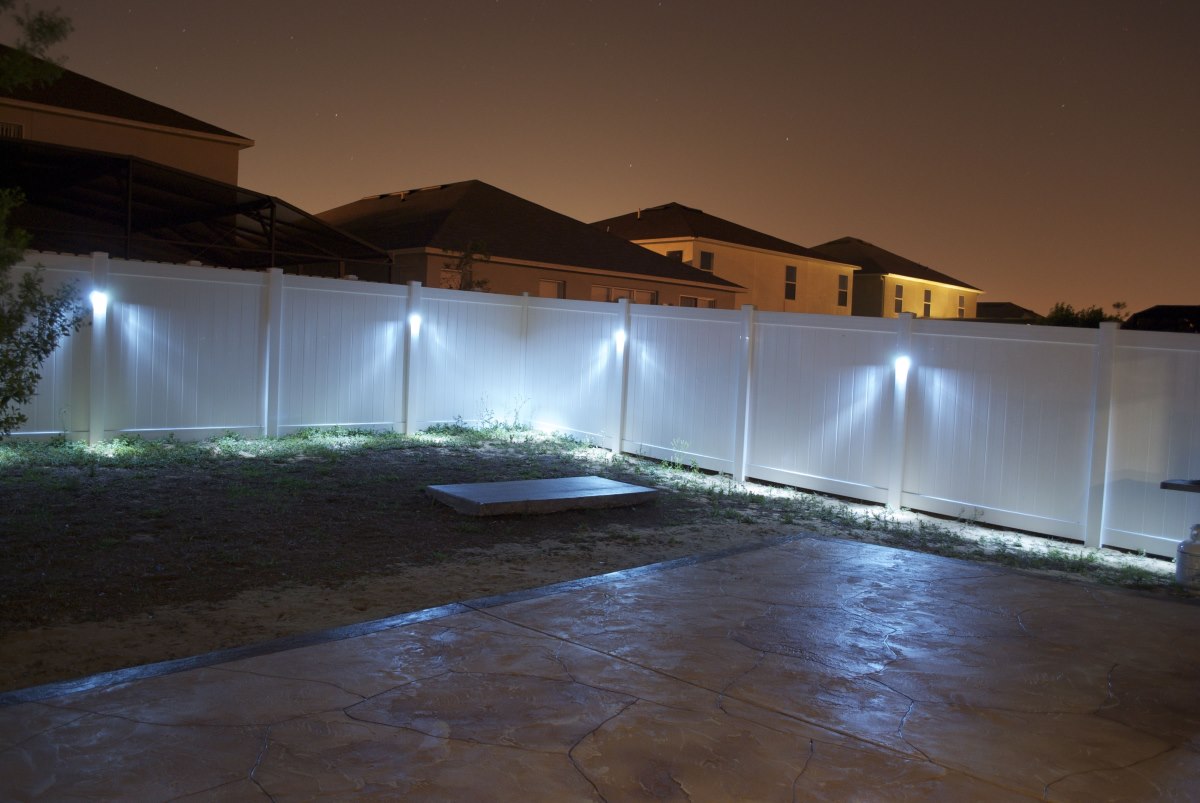
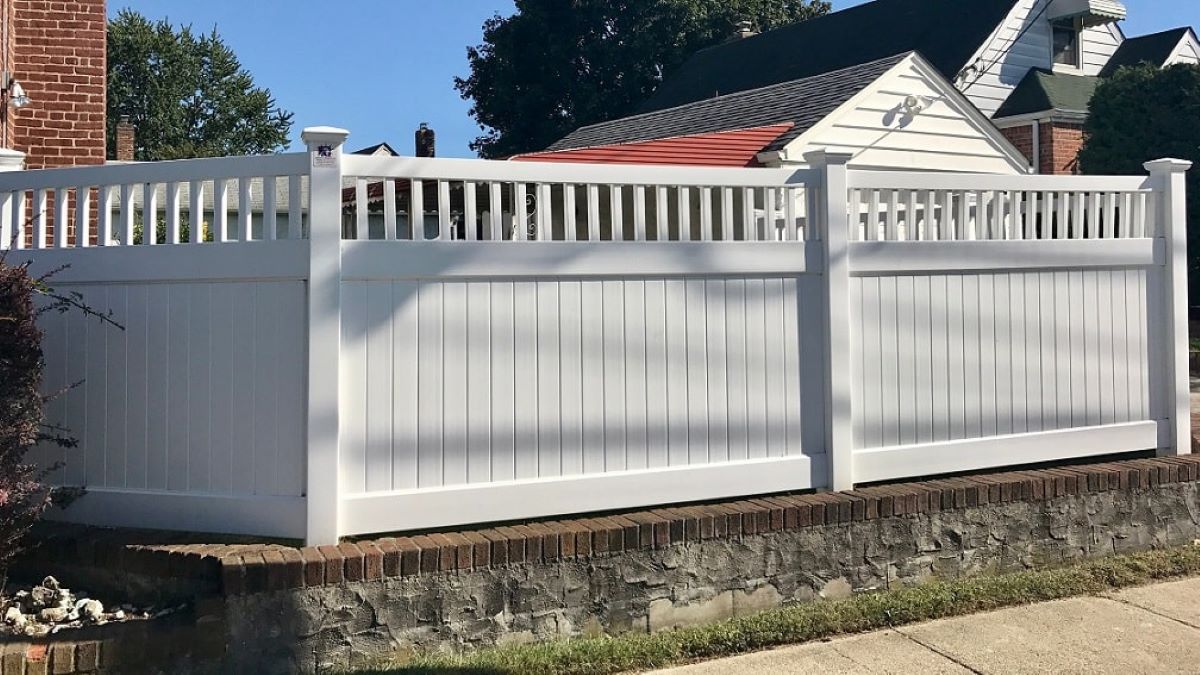
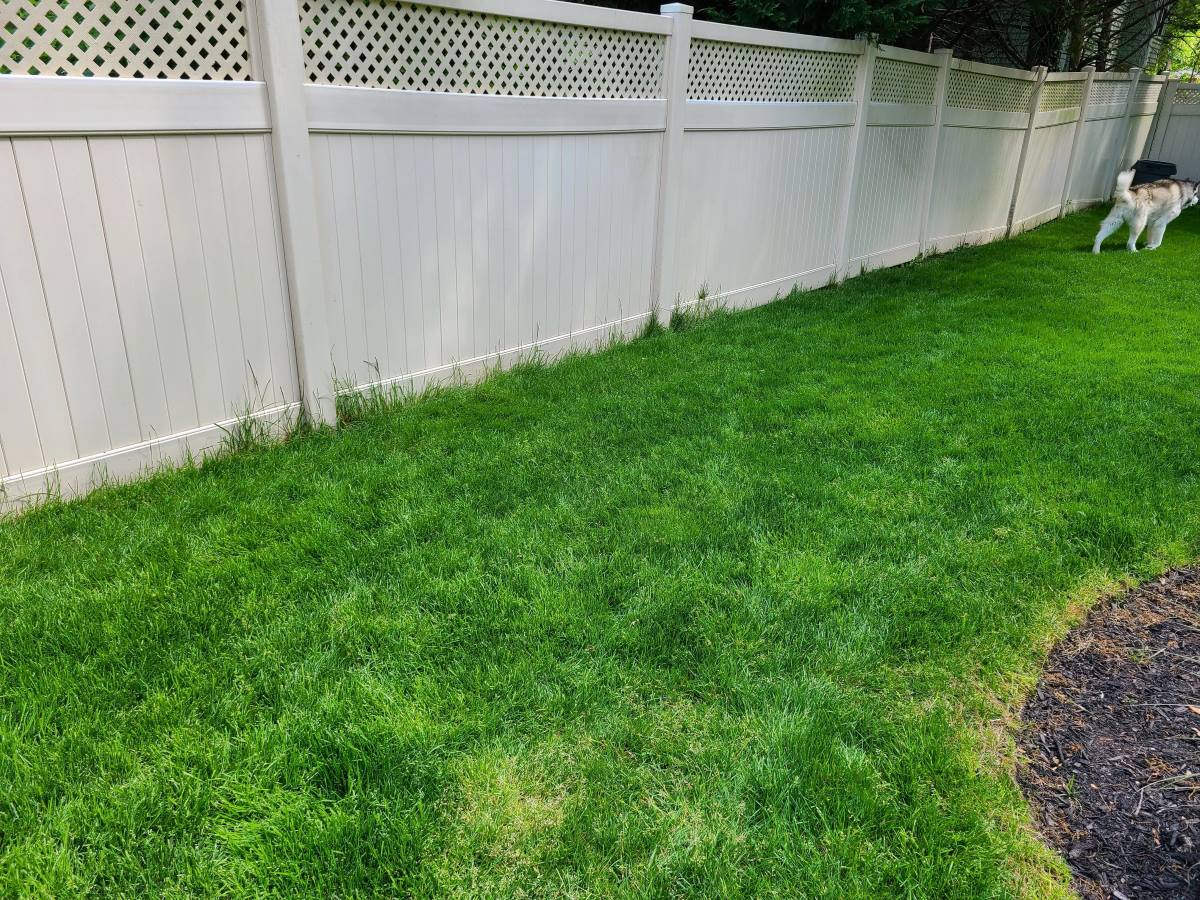
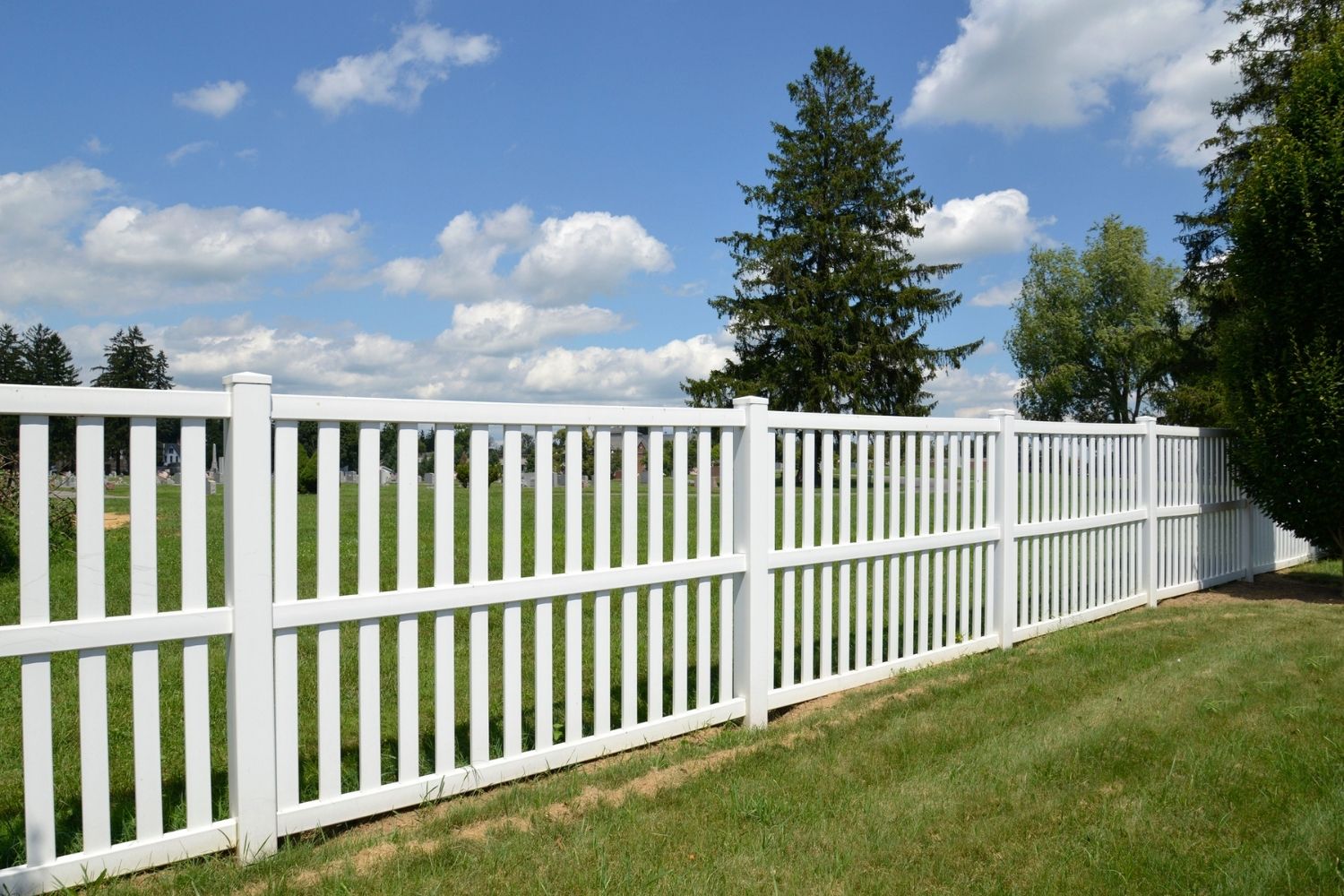

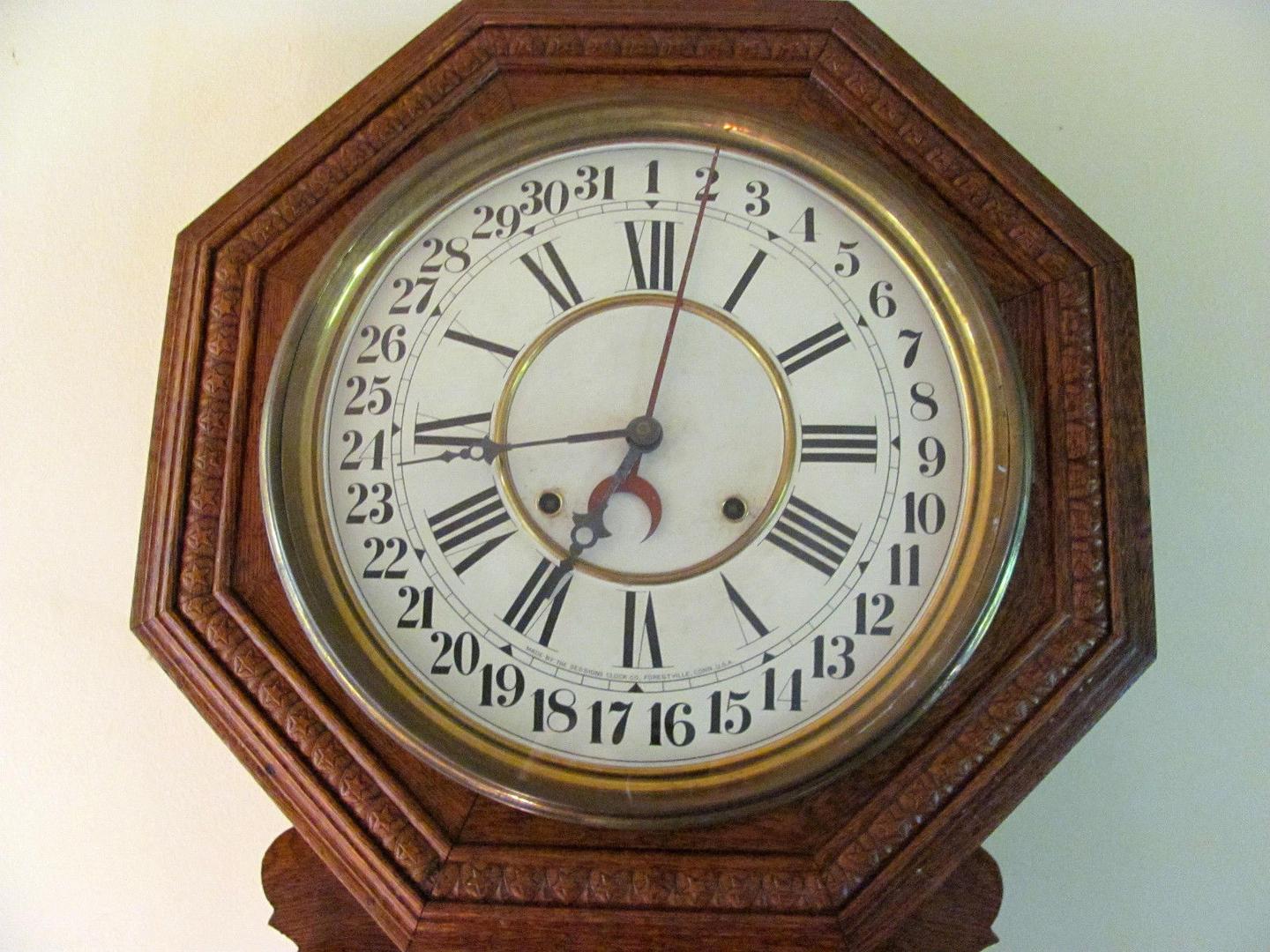


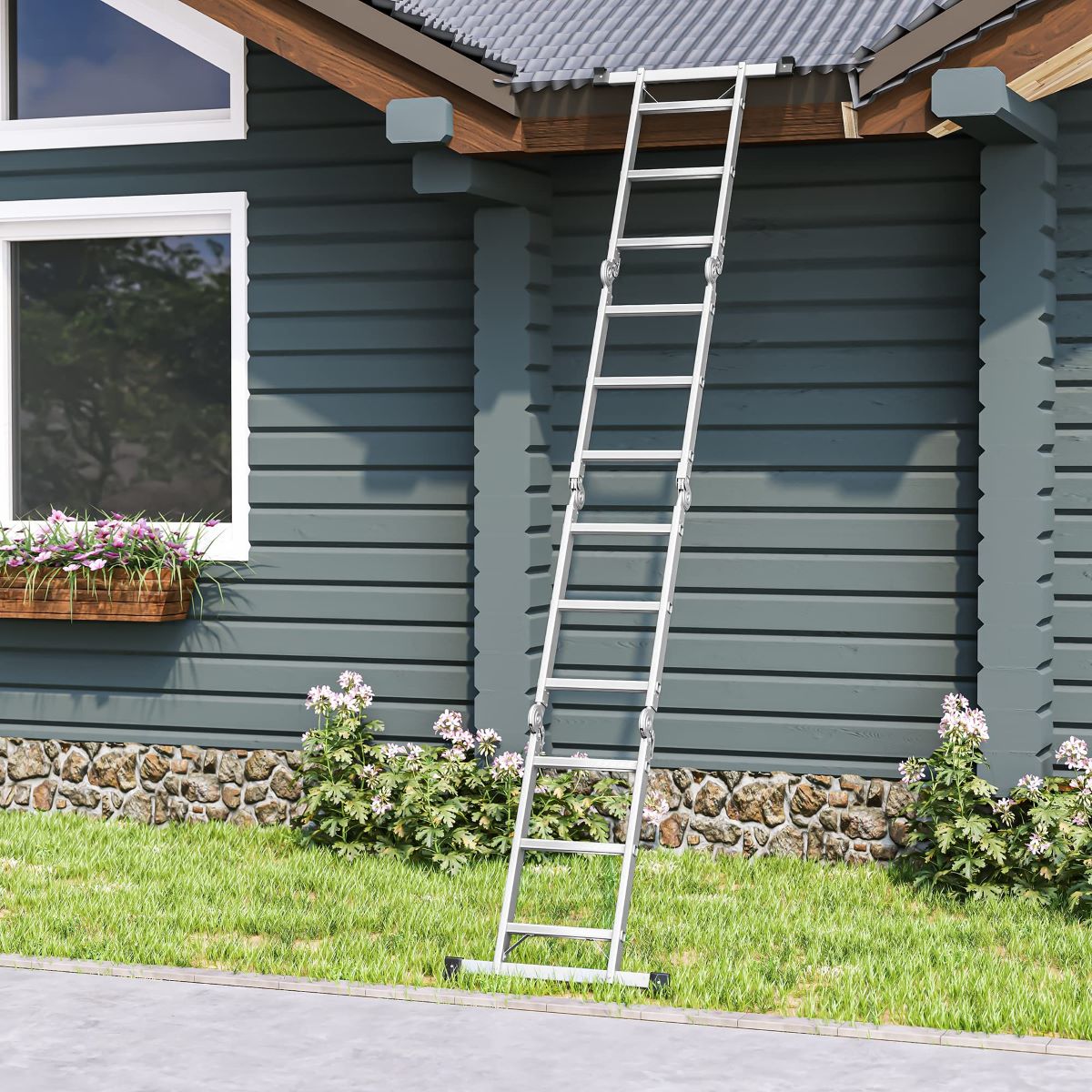

0 thoughts on “How To Brace A Vinyl Fence Against Wind”